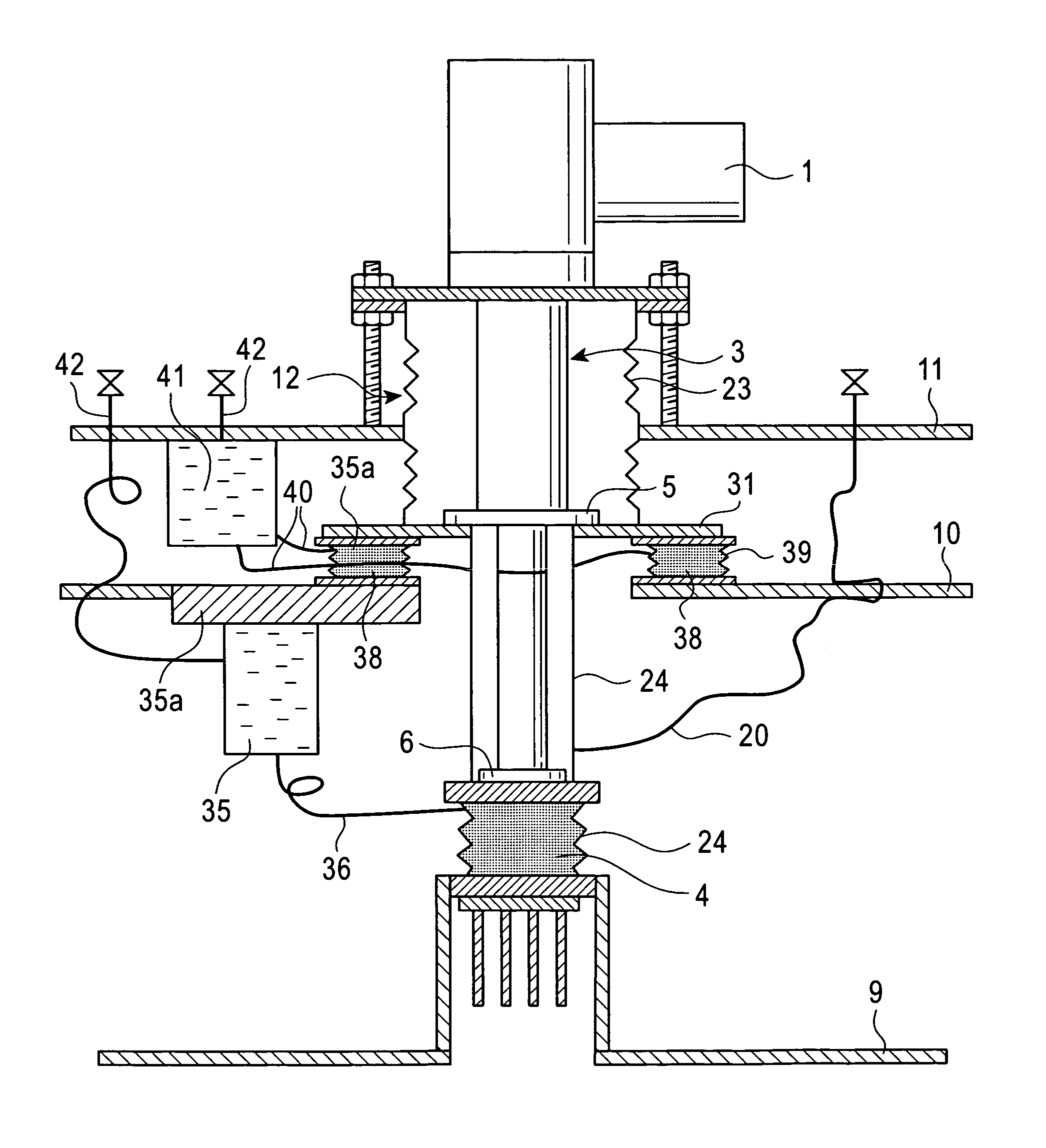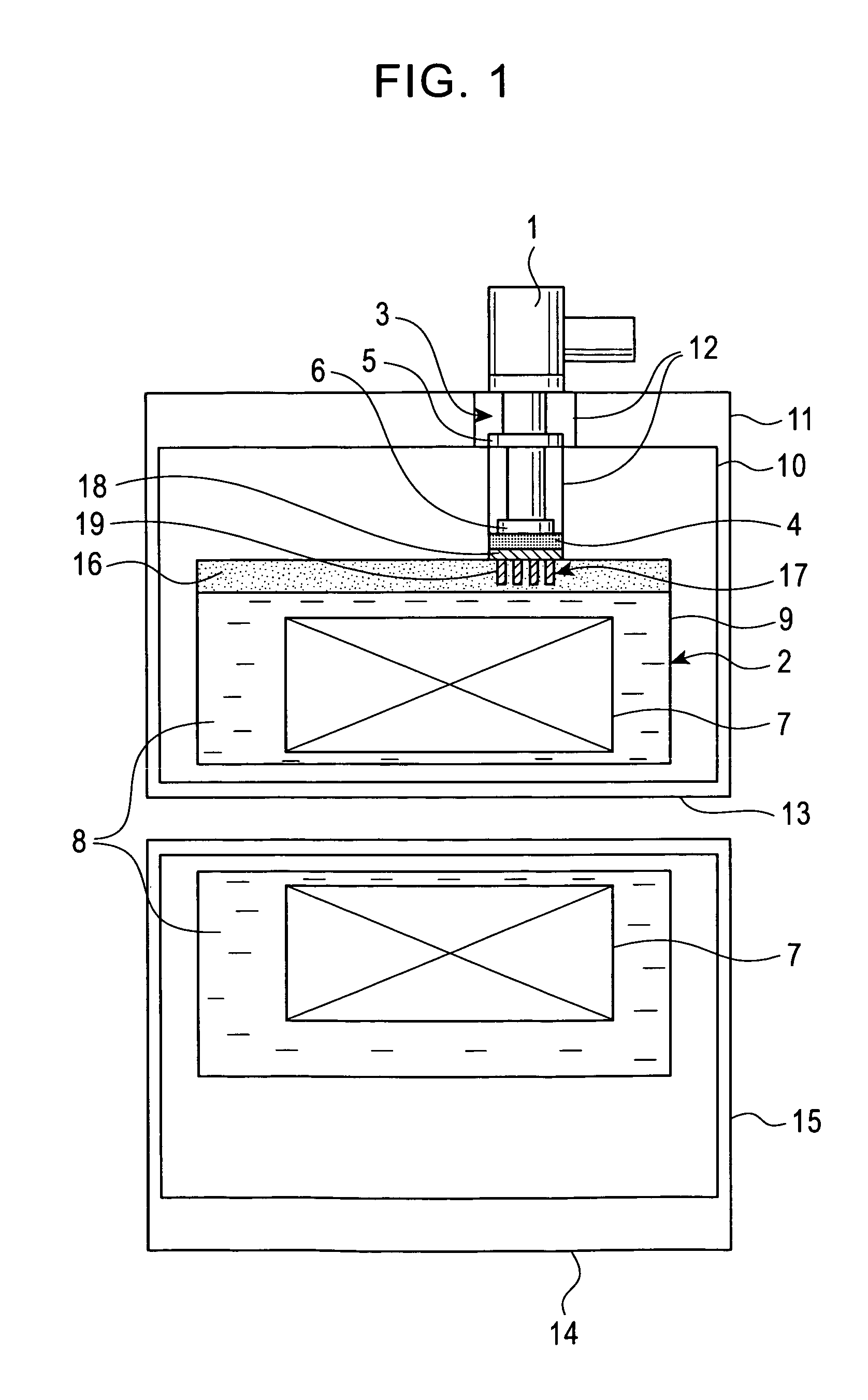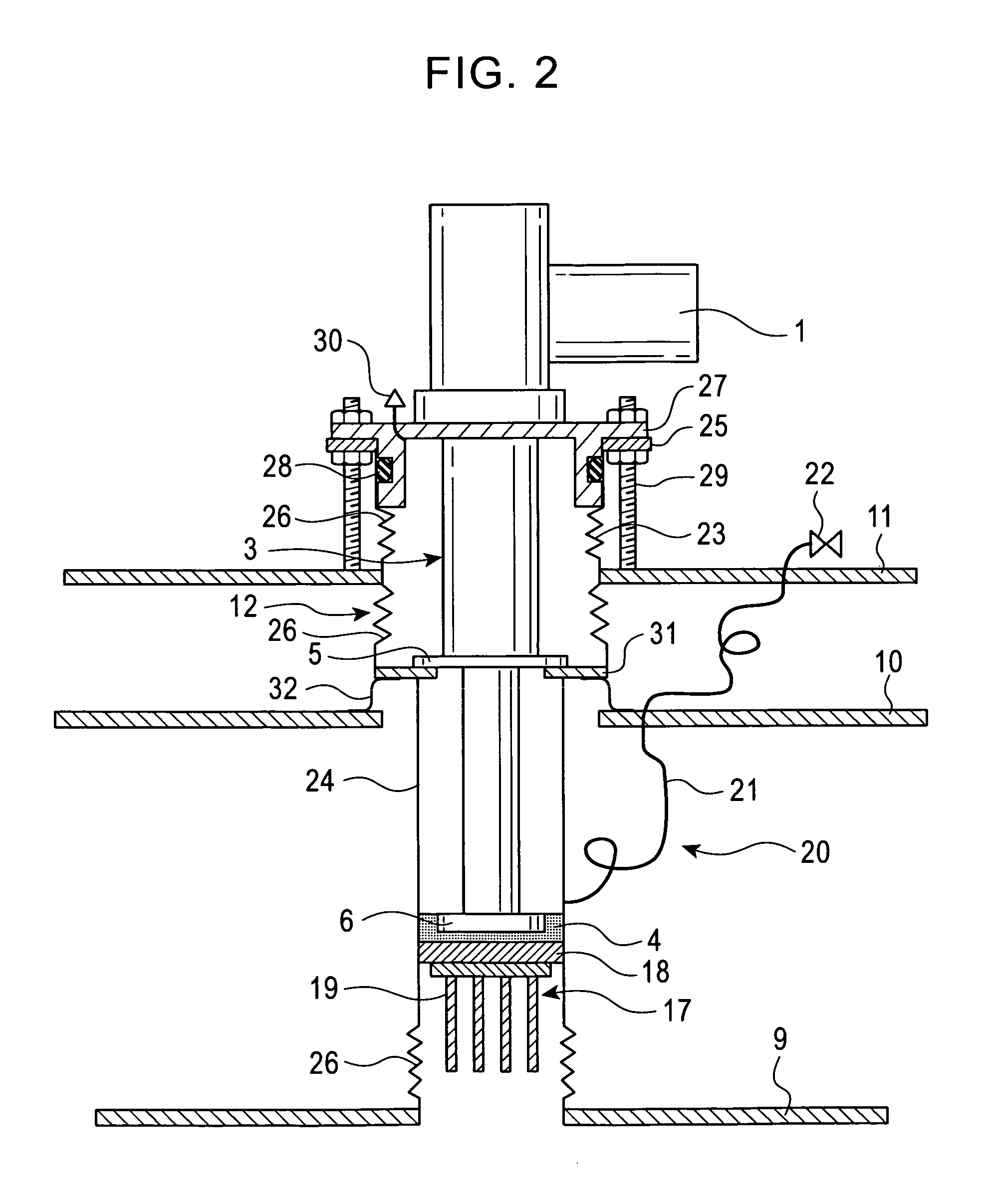Cryogenic system
a cryogenic system and cryogenic technology, applied in the field of cryogenic systems, can solve the problems of increasing the operation cost of the system, affecting the operationability of the cryogenic system, and the maintenance time cannot be shortened to a few hours, and achieve excellent thermal contact
- Summary
- Abstract
- Description
- Claims
- Application Information
AI Technical Summary
Benefits of technology
Problems solved by technology
Method used
Image
Examples
Embodiment Construction
[0067]Embodiments according to the present invention will now be described with reference to the drawings.
[0068]FIG. 1 is a schematic sectional view of one example of a cryogenic system, MRI. This cryogenic system includes a cryocooler unit 1 and an element to be cooled 2. The cryocooler unit 1 includes a cooling stage 3. A space is formed between the cooling stage 3 and the element to be cooled 2, and a thermal joint 4 is placed in the space. The thermal joint 4 is composed of a substance that has the melting point higher than the cooling temperature of the element to be cooled 2 and that is in a liquid or gaseous state at room temperature and atmospheric pressure. The thermal switch of the thermal joint 4 is on in a solid state.
[0069]The exemplary cooling stage 3 includes a first cooling stage 5 and a second cooling stage 6 in series. The second cooling stage 6 has a temperature of about 4 K, which is lower than that of the first cooling stage 5. The second cooling stage 6 has a c...
PUM
| Property | Measurement | Unit |
|---|---|---|
| temperature | aaaaa | aaaaa |
| temperature | aaaaa | aaaaa |
| temperature | aaaaa | aaaaa |
Abstract
Description
Claims
Application Information
 Login to View More
Login to View More - R&D
- Intellectual Property
- Life Sciences
- Materials
- Tech Scout
- Unparalleled Data Quality
- Higher Quality Content
- 60% Fewer Hallucinations
Browse by: Latest US Patents, China's latest patents, Technical Efficacy Thesaurus, Application Domain, Technology Topic, Popular Technical Reports.
© 2025 PatSnap. All rights reserved.Legal|Privacy policy|Modern Slavery Act Transparency Statement|Sitemap|About US| Contact US: help@patsnap.com



